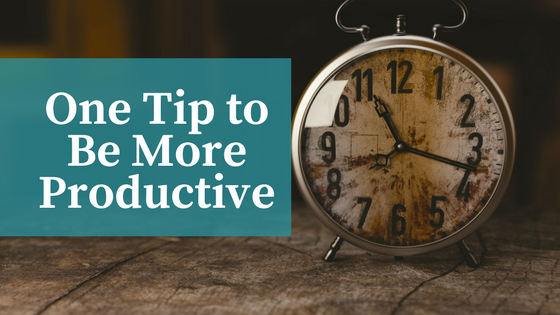Every day we encounter hundreds of tasks needing to be accomplished. Some big, some small, but our goal should be to maximize the number of tasks we can complete in a day without compromising quality. For this reason, it can be useful to disrupt your routine and try some new techniques to improve your efficiency. In the past I have tried a number of experiments to become more productive. There was one method that proved particularly useful.
Before I get into tip, it’s important to have an understanding of your workflow. That is, what you realistically will or won’t do. For example, I have made multiple New Year’s resolutions to keep a planner as a form of organization. The first week consisted of color coordinated tasks, the second week consisted of writing down my schedule, and the third week the planner began to collect dust. If I am going commit to something, I’m not going to be writing everything down. This can be an effective practice, but for me, it is more work than it’s worth.
So, if I’m not writing down my tasks, what am I doing?
I committed myself to completing many of my tasks before I’d even have to write them down. I called this practice the two minute rule, and it’s quite simple. Anything that can be completed in two minutes or less should be completed ASAP. Not as soon as possible, but as soon as practical.
Throughout the day I will get a number of e-mails I need to respond to, phone calls that need to be answered, or projects needing to be printed. These are all small projects but if I don’t address them, they can easily accumulate into bigger time commitments. So, I commit myself to addressing these tasks as quickly as I can. That way I don’t have to worry about doing these tasks later, and possibly forgetting about the task.
There are times when I have a big project I need to commit to, and in these instances I will consciously avoid small distractions. When a different project is high priority, I will ensure that project is completed. Then I will move onto addressing all my smaller, two minute tasks.
This may seem obvious: respond to e-mails and phone messages as soon as you can, but it’s very easy to get into the habit of ignoring them. By committing myself to addressing my small tasks, I am taking an active approach to avoid procrastination. With all of the distractions that are accessible at work, ignoring tedious tasks is easier than ever. However, if I don’t want to deal with that task right now, I won’t want to deal with it later. I just get it done, move on with my to-do list, and redirect my focus to my bigger commitments.
At first, I was concerned this would result in an increase of distractions throughout the day. While it sometimes requires me to get out of my seat when I don’t want to, I know this is a productive way for me to work. Not only do I not like writing down my tasks, I also don’t like having a bunch of commitments hanging over my head. I want to be able to keep my focus on the tasks at hand and avoid procrastination and for me, this practice works.
For me, the two minute rule was one of the best commitments I’ve made. I determined what are distractions for me and found an approach to working through them. If you’re like me, I’d recommend giving the two minute rule a try. This experiment may lead to an increase in productivity. If it doesn’t work, at least you’ve given yourself more information about your personal work style.





